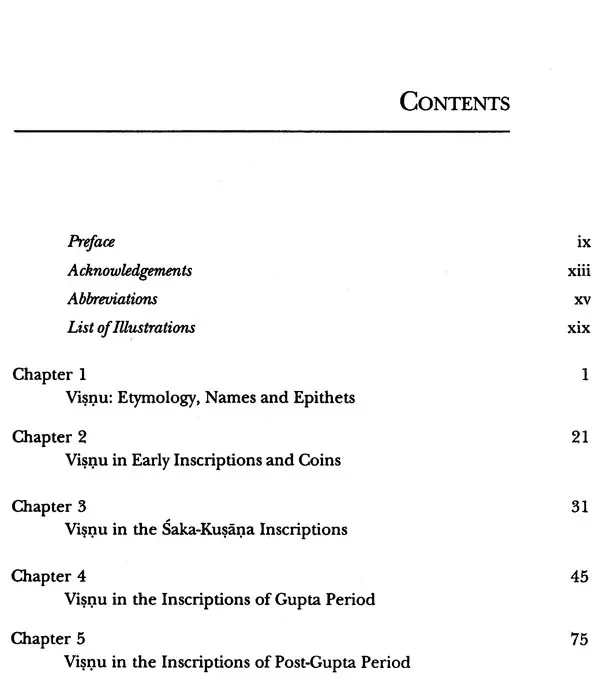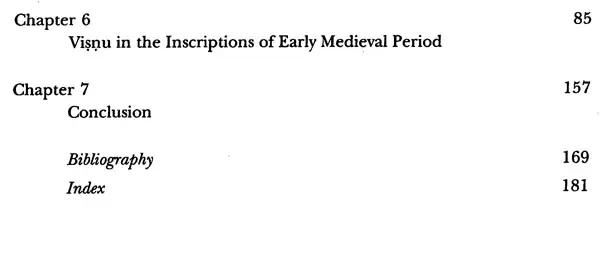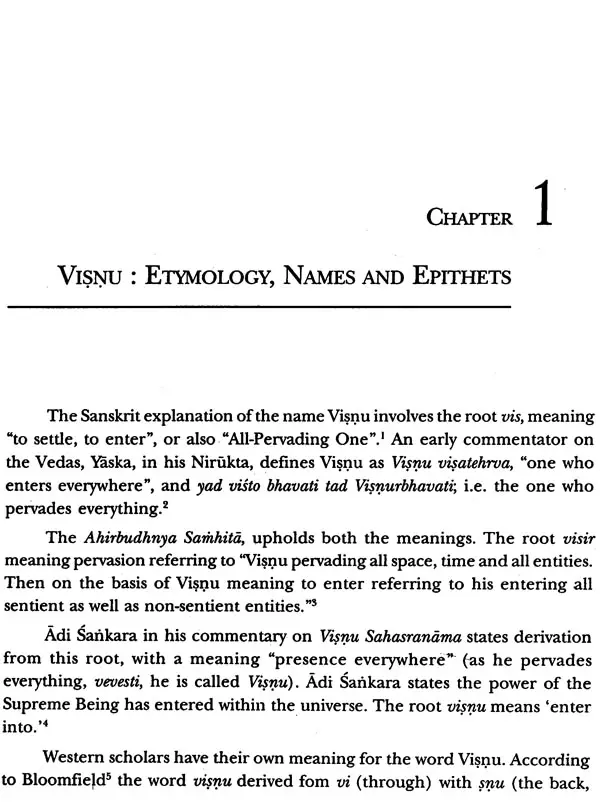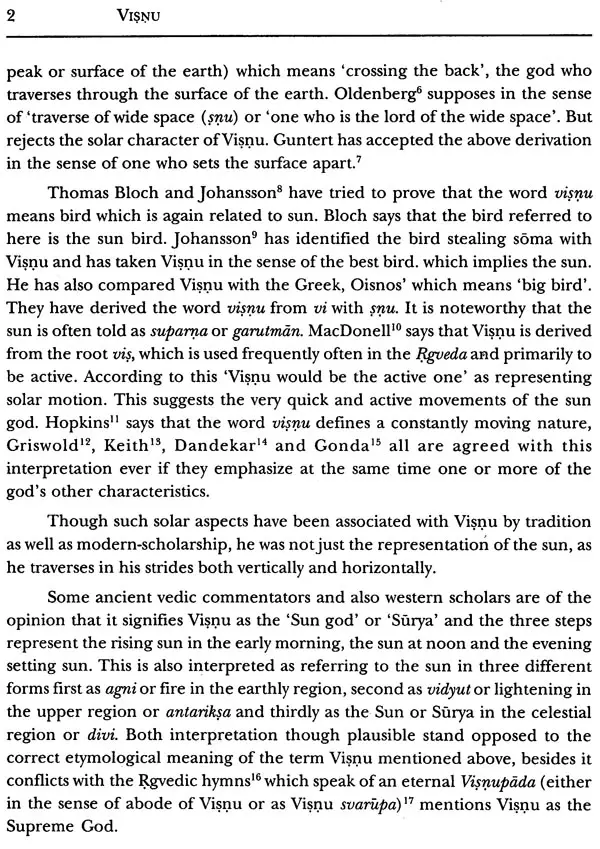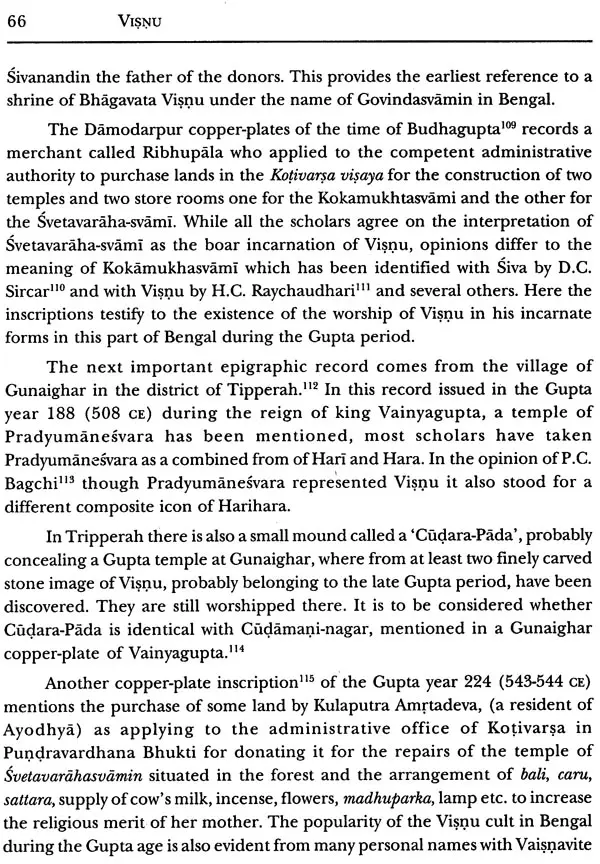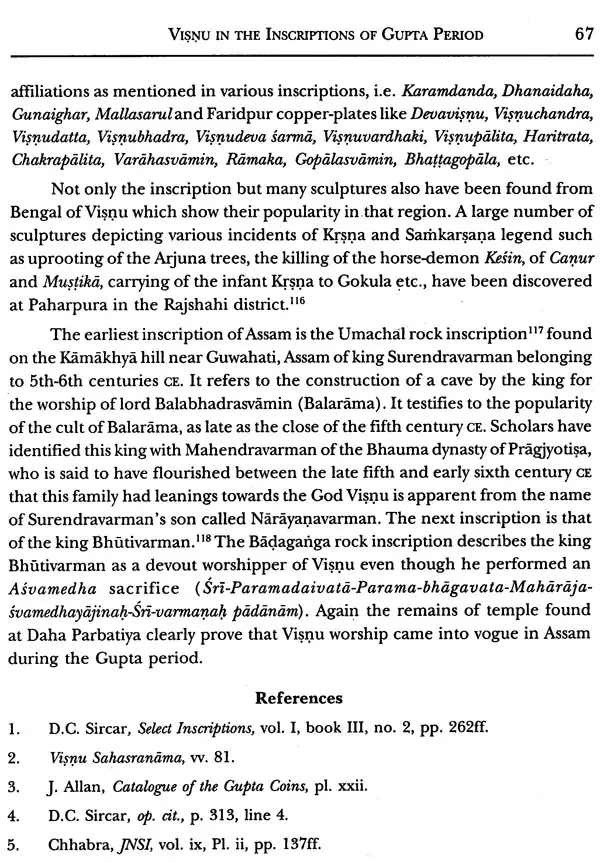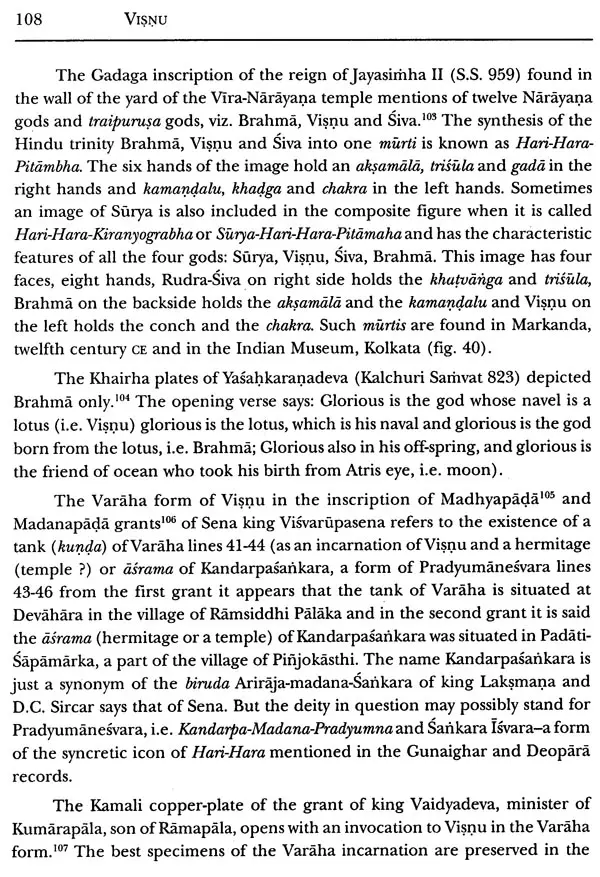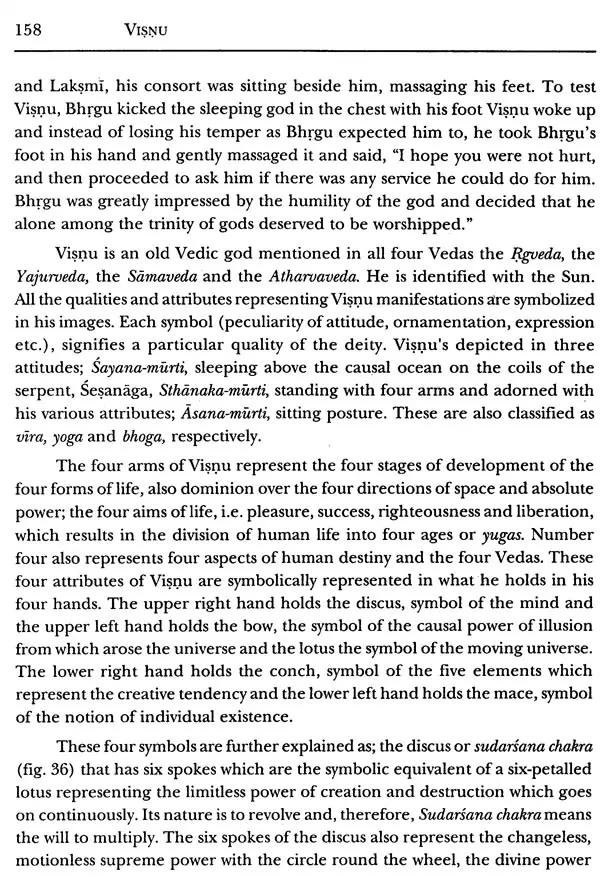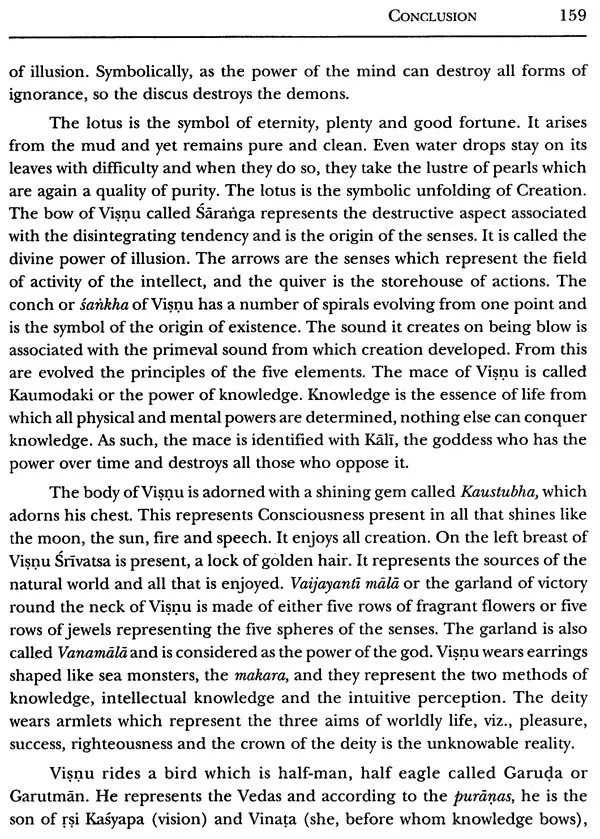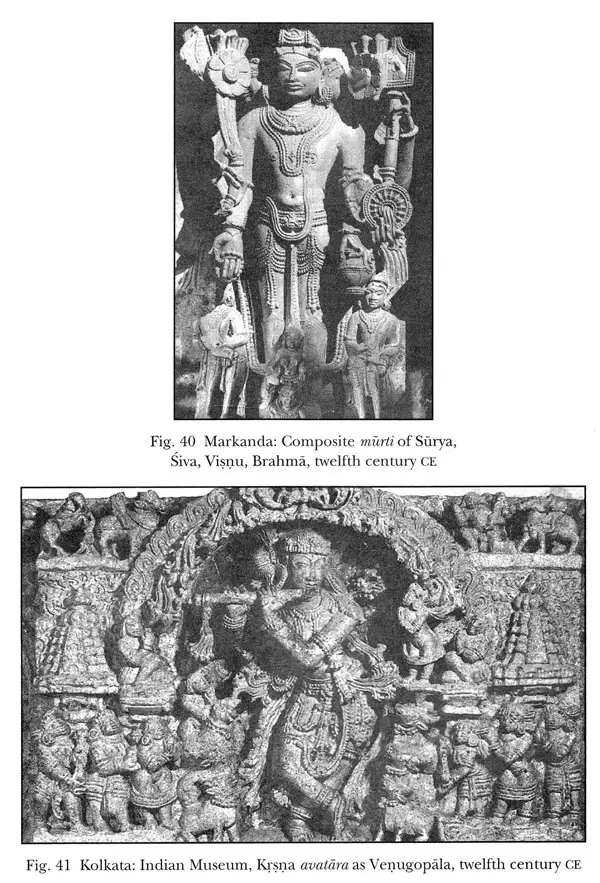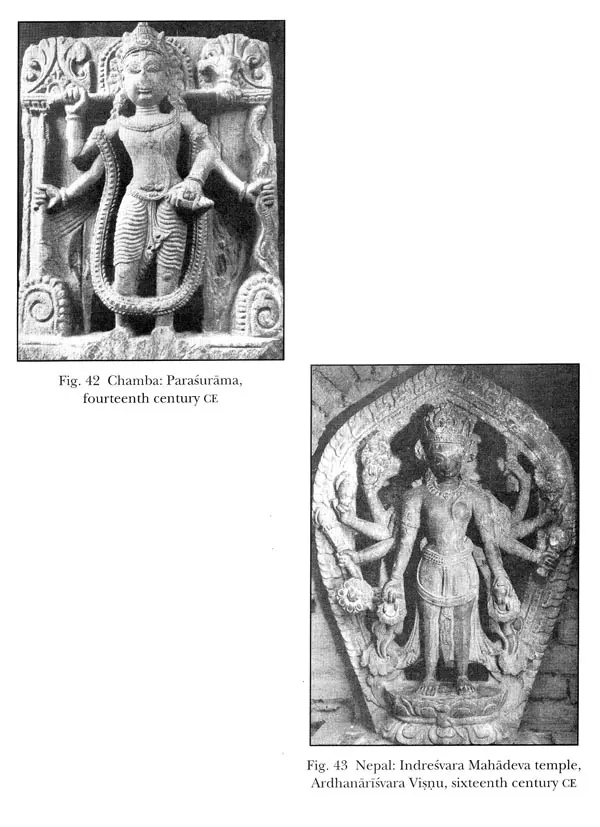About the Book Visnu is the object of worship as the Supreme Deity of Vaisnavism, which is one of the most important cult that came into existence some centuries before the Christian Era. A study of epigraphical evidence discloses a variety of names and attributes of Visnu known throughout north India. He has been called Visnu and Vasudeva in the Gujarat-Saurashtra region; Purusottama, Rajivalochana and Upendra in central India; and Narayana, Trivikrama and Chaturbhuja in eastern India. In the Upper Ganga valley region, he is addressed as Adikesava and Chandra-Madhava. With the elaborate nomenclature, the attribute of the god are equally impressive in number and variety. The chakra, kaustubha, Garuda and sankha which are very often in the inscriptions described are traditionally associated with Visnu.
The book is mainly concerned with the historical development and mythological associations of Visnu. Though his presence is too conspicuous in ancient Indian art and literature, but the profile of the Visnu provided by the epigraphical annals has its own importance. The accounts that follows, provide glimpses into the adoration of the God Visnu, in a somewhat chronological order, as available in the epigraphical annals from earliest times. There are almost fifteen hundred (1500) inscriptions belonging to second century BCE to twelfth century CE, cover the entire geographical limits. These inscriptions have been issued by the royal authority and private donors. Invariably they indicate the name of ruling authorities and the common people, the occasion, the purpose of the grant and also usually the date on which the record was incised.
About the Author Dr Suman Jain is Professor in Paleography and Epigraphy in the Department of Ancient Indian History, Culture & Archaeology, Banaras Hindu University, Varanasi. She passed BA and M.A. with first division from the University of Gorakhpur and obtained her Ph.D. in 1992 from the Banaras Hindu University and she began her career in BHU in 1993.
She is life member of many academic institutions. She has many research papers on paleography and epigraphy in various journals, three books on epigraphy (already published) and two books (in the pipeline) to her credit. She is currently the President of the Kashi province of The Ithihas Samkalan Smithi Yojna and the V.C. nominee for Banaras Hindu University, Awadh University and Purvanchal.
Preface Vigil.' is the object of worship as the Supreme Deity of Vaisnavism which is one of the most important cult that came into existence some centuries before the Christian Era. The hymns of the Rgveda, the Upanisads, the Agamas and the Visnu Purana revealed him as a Supreme Deity. The same is known by the name of Narayana in the Upanisads, as Vasudeva in the Pancaratra Agamas and as Visnu in the Puranas. Among the thousand names of Visnu, Vasudeva, Bhagavata and Narayana are generally used in inscriptions and literature. A study of epigraphical evidence discloses a variety of names and attributes of Vigil' known throughout north India. He has been called Vigil]. and Vasudeva in the Gujarat-Saurashtra region; Purusottama, Rajivalochana and Upendra in central India; and Narayana, Trivikrama and Chaturbhuja in eastern India. In the Upper Ganga valley region, he is addressed as Adikesava and Chandra-Madhava. With the elaborate nomenclature, the attribute of the god are equally impressive in number and variety. The chakra, kaustubha, Garuda and Sankha which are very often in the inscriptions described are traditionally associated with Visnu. There are almost fifteen hundred (1500) inscriptions belonging from second century BCE to twelfth century CE, cover the entire geographical limit from Kashmir to south India and from Saurashtra to Assam. The languages are Prakrta, Prakrta mixed Sanskrit and Sanskrit and the scripts are Brahmi and Kharosthi.
Book's Contents and Sample Pages
